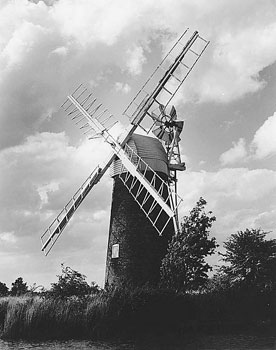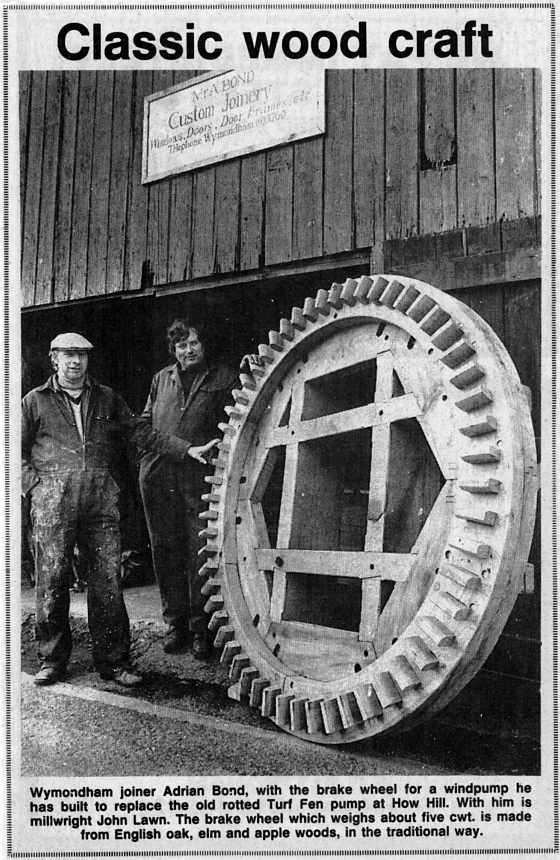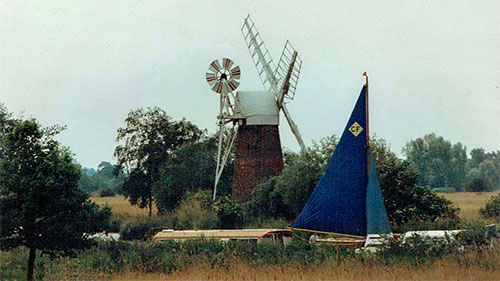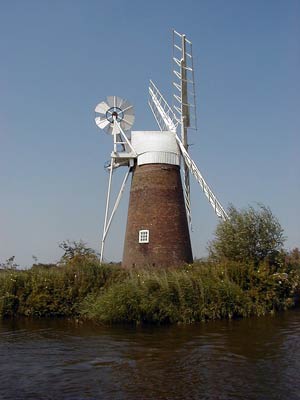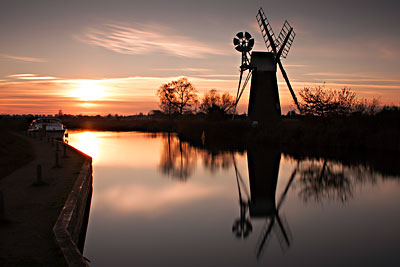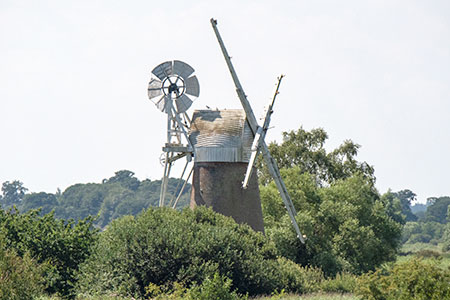Turf Fen Mill on the Norfolk Broads set to be restored
Turf Fen Mill in Norfolk Broads gets restoration grant
It is one of the most recognisable - and one of the most photographed landmarks in the Broads.
But Turf Fen Mill, in Irstead, has not turned for more than two decades, regularly suffers from floods and is deteriorating.
Now, thanks to a £242,870 grant from Historic England, the Grade II listed building will be saved.
The mill, which is owned by Norfolk County Council, is one of three drainage mills that sit on the How Hill estate, home of the How Hill Trust, an environmental study centre for the Norfolk and Suffolk Broads.
It is planned that repairs to the mill will be completed by 2026.
The repair project will also be used to further develop the skills of young millwrights who have been training under the Broads Authority’s recent mills training programme, part-funded by The National Lottery Heritage Fund.
Sarah Morrison, Historic England architect, said: “The Turf Fen mill is a familiar landmark on the Norfolk Broads and an important part of the local landscape story.
"This exciting partnership project with Norfolk County Council, Norfolk Windmills Trust and the Broads Authority will repair and protect the building for years to come, enable better access to the site and tell the story of how such mills shaped the local landscape.”
Councillor Phillip Duigan, chair of Norfolk Windmills Trust, which maintains the building, said: “I’m thrilled that Norfolk County Council has secured this grant from Historic England to carry out the restoration works.
"Norfolk is famous for its attractive and diverse landscape.
"Working together with partners to secure funding like this means we can protect important landmarks like Turf Fen Mill and safeguard them for Norfolk and its future generations," he added.
Turf
Fen Mill, which sits next to the Andrew Farrell, Broads Authority partnership and external funding manager, said: "Turf Fen is one of our most iconic mills and an important part of the Broads National Park's built heritage.
"This investment from Historic England will help to ensure that the skills to repair and restore these mills remain in our area and ensure that this beautiful and rare example of the engineering that shaped our landscape remains for many more decades to come."
Norfolk County Council is also working with the Norfolk Windmills Trust and the Broads Authority, with the support of the How Hill Trust, to develop skills training, outreach activities and historic interpretation around the three remaining mills in the area.
History of Turf Fen Mill
Turf Fen Mill was built around 1880 by millwright William Rust to drain the surrounding marshland into the River Ant and make the fields on the west bank suitable for grazing livestock.
Standing at 31 feet high, with a brick tower and a wooden main shaft, it is topped by a boat-shaped weatherboarded cap.
The mill was constructed with four double-shuttered sails and with a choice of high or low gears.
The mill fell out of use in the 1920s. It was previously restored between 1984 and 1987 when steel stocks were added and the mill was returned to turning condition.
Today, however, it is in poor condition and at risk from further deterioration.
The ground floor regularly floods, the cap and stocks need attention, there are currently no sails, and it can only be accessed by the river.
It was added to Historic England’s Heritage at Risk Register in 2023.
Last month, plans submitted to the Broads Authority proposed new sails be installed, repairs carried out to brickwork and the cap raised for an inspection.
Daniel Hickey Senior Reporter, Eastern Daily Press - 8th February 2024
|
